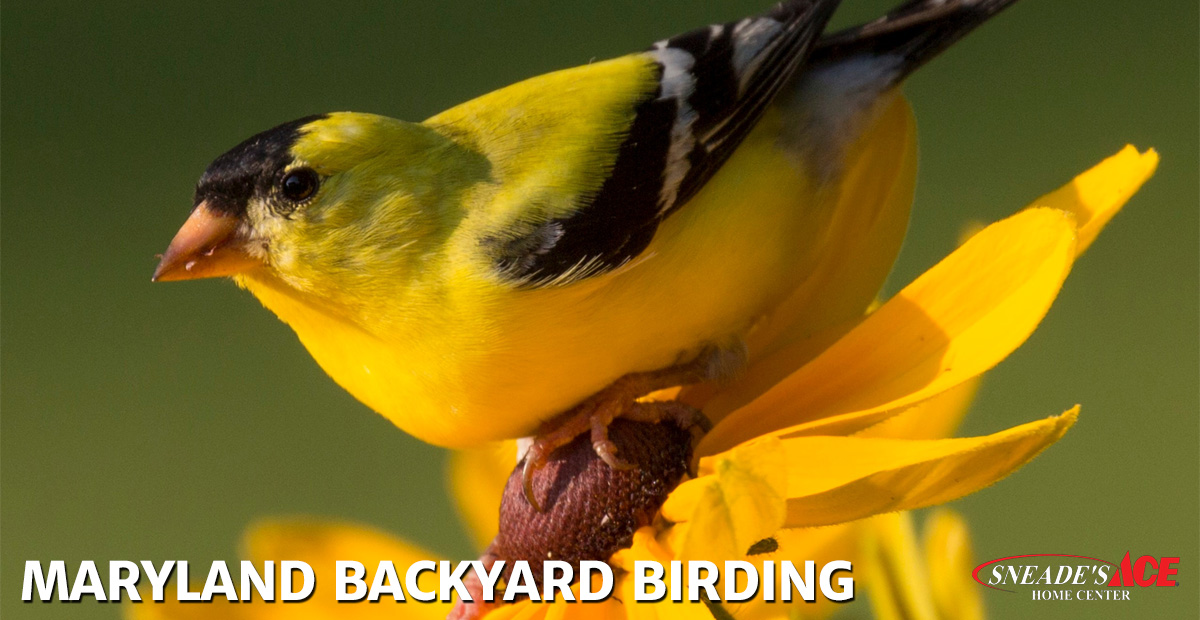
When the raspberry bushes produce, and the cherry trees blossom in Maryland, you know spring has arrived. It’s a time when many birds migrate back to our beautiful state. This means there’s a serious uptick in action for those who enjoy backyard birding.
It’s time to prepare your backyard feeders and keep the binoculars handy. Let’s learn about four of the most common birds that return to Maryland backyards in the spring.
Red-Eyed Vireo
This small bird has a lot to sing about. You can hear their short warbler-like song all day long. Sometimes a single male will sing over 20,000 in one day.
Red-Eyed Vireos can be hard to find as they like treetops. They use large leaves as cover. But if you can learn their bird call, you will find them throughout the spring and summer.
With an attractive color, their wings and tails are olive green. From the lower face down to under the tail, they are white. The top of the head has a silver crown. Fun fact: only adults have red eyes.
Although they eat insects primarily, you can tempt the Red-Eyed Vireo to a backyard feeder with chopped apples and suet.
Indigo Bunting
Male Indigo Buntings really stand out against foliage. They are bright blue with streaks of black on the wings and tail. The females are brown, so they blend into backyards easier.
You can almost always find Indigo Buntings in shrubby areas. They love bushes, shrubs, brambles, and thorns as a habitat. Their nests are found relatively low, just one to three feet off the ground.
Foraging in bushes means this bird eats a lot of insects and berries. But they do like tiny seeds like thistle and nyjer. So, you may lure them to your backyard with the right birdseed.
Yellow-Billed Cuckoo
Seeing a Yellow-Billed Cuckoo is a real treat for birdwatchers. This bird likes to stay well-hidden in leafy woodlands. And they stay very still as they hunt for caterpillars. But they can be drawn to a feeder with suet.
Light brown backs and wings color this bird. Their wings are fox-like reddish-brown at the tips. Curved, yellow bills look like a banana.
Even though they may be hard to see, this cuckoo bird is easy to hear. They have a distinctive knocking call that is drawn out and, of course, sounds like a ‘coo.’
Fun fact: Yellow-Billed Cuckoos often call out in response to loud noises. They have become known as the “rain crow” because they tend to call at the sound of thunder.
Chipping Sparrow
The rapid trilling sound of this bird is one of the most common sounds of spring. A Chipping Sparrow is easy to hear throughout any backyard or neighborhood with a loud call.
Their coloring includes a tan back, streaked by black or dark brown. The breast, underbelly, and face are all velvety gray. The top of the head has a red mohawk.
Chipping Sparrows love to nest in shrubs or small trees found in many backyards. Fun fact: they aren’t great nest builders. They often construct their nests so flimsily that you can see the light through them.
Chipping Sparrows love bird feeders and will flock to cracked corn and rolled oats.
Birding Headquarters
Sneade’s is your birding headquarters. We can help you find the suet or bird feed you need to attract the birds you desire to watch to your backyard. We also have several styles of bird feeders, birdbaths, and birdhouses. If you want to turn your yard into a destination for our winged friends, we can help you. Please stop by one of our locations to prepare for spring migration to Maryland.
